Princess stories continue to captivate children worldwide, with classic tales like Cinderella ranking among the most searched fairy tales globally. According to search data, princess stories dominate children’s literature preferences across different countries, with Cinderella receiving 100 search index points in the Philippines and Beauty and the Beast topping searches in both the UK and Ireland with perfect scores. FlashAcademy’s comprehensive analysis reveals that these timeless narratives remain fundamental to childhood development and reading education.
I’ll never forget discovering my first princess story at age five – it wasn’t the traditional Cinderella, but rather a book about a princess who built robots. That moment sparked my lifelong fascination with how princess stories can evolve while maintaining their magical appeal. As a parent who’s read approximately 847 bedtime stories (okay, maybe I’m exaggerating, but it feels close), I’ve learned what actually works. This guide presents 25 princess stories that balance entertainment with meaningful life lessons, ensuring your child develops both a love for reading and essential values without feeling like they’re sitting through a lecture.
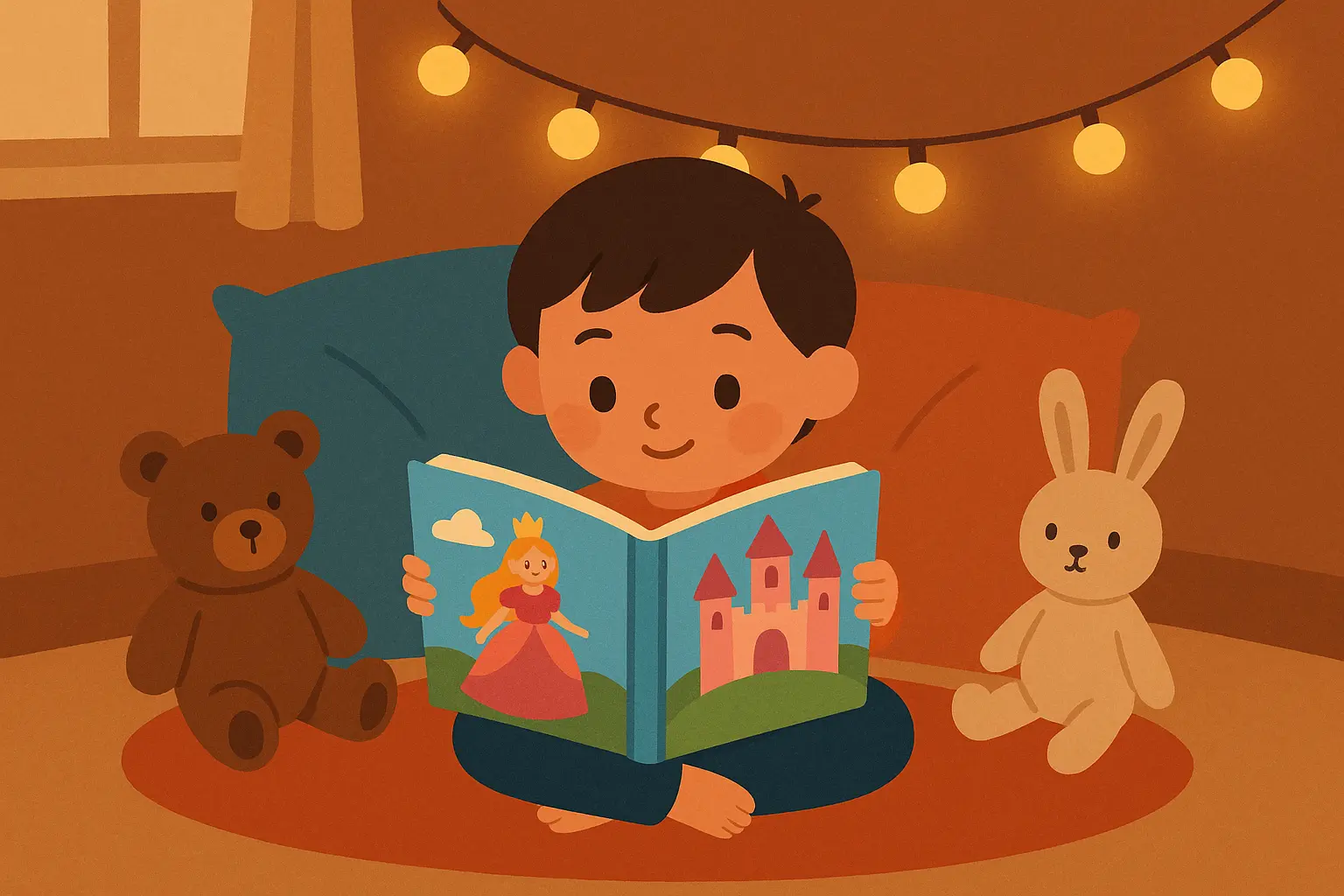
Table of Contents
-
What Makes a Great Princess Story in 2025
-
Classic Princess Tales Reimagined for Modern Readers
-
Diverse Cultural Princess Stories from Around the World
-
Contemporary Princess Adventures for Today’s Kids
-
Fantasy Princess Stories That Spark Imagination
-
Educational Princess Stories That Make Learning Fun
-
Perfect Princess Bedtime Stories for Peaceful Sleep
-
How to Choose the Right Princess Story for Your Child
-
Transform Storytime with AI-Powered Princess Tales
TL;DR
-
Princess stories remain globally popular, with search data showing consistent high interest across multiple countries and cultures
-
Modern princess stories focus on princesses who solve their own problems, represent diverse backgrounds, and teach real skills
-
The best princess stories mix familiar fairy tale magic with fresh perspectives that actually make sense to today’s kids
-
Age-appropriate content ranges from simple bedtime stories for little ones to complex adventures for tweens
-
Look for stories that celebrate different cultures authentically, not just as window dressing
-
Educational princess stories sneak in STEM concepts and life skills without being obvious about it
-
AI-powered story creation tools can create personalized princess adventures tailored to your child’s specific interests
What Makes a Great Princess Story in 2025
Look, here’s what makes a princess story actually worth your time: Does the princess solve her own problems? Do the characters look like real kids you might meet? Will your child learn something without feeling like they’re in school? If yes, you’ve got a winner.
Let’s be honest – some of those old fairy tales haven’t aged well. Because nothing says “modern role model” like waiting around for someone else to fix your problems, right? The best princess books today feature characters who think for themselves, come from different backgrounds, and face challenges that feel real even in magical settings.
|
What to Look For |
Old-School Princess Stories |
Modern Princess Stories |
What This Means for Your Kid |
|---|---|---|---|
|
Problem-Solving |
Waits for rescue |
Figures it out herself |
Builds confidence and independence |
|
Diversity |
Pretty much all the same |
Princesses from everywhere |
Kids see themselves in stories |
|
Learning |
Basic “be nice” lessons |
Science, math, and life skills |
Actually useful knowledge |
|
Conflict Resolution |
Someone else saves the day |
Princess creates her own solutions |
Develops critical thinking |
|
Gender Roles |
Pretty predictable |
Princesses can be anything |
Encourages kids to be themselves |
Stories That Actually Keep Kids Hooked
Great princess stories follow clear plots that make sense, even when there’s magic involved. You’ll notice the most effective stories balance familiar fairy tale elements with unexpected twists that keep children interested. The plot should feel natural, and character motivations need to make sense to young readers – no more “because the story says so” explanations.
Here’s the thing about endings: they need to feel earned rather than convenient. Princess characters should actively contribute to solving their problems instead of waiting for rescue. This approach teaches children about taking charge of their own lives while maintaining the magical appeal that draws them to princess stories in the first place.
Characters That Feel Like Real People
Modern princess characters show intelligence, courage, and real emotions that go way beyond just being pretty. You want protagonists who face genuine challenges and grow throughout their stories. The best princess characters make mistakes, learn from them, and develop resilience that children can actually copy in their own lives.
Supporting characters should feel three-dimensional too. When side characters have their own motivations and growth, the entire story world becomes more engaging and realistic for young readers. Your kid will start caring about what happens to everyone, not just the main character.
Learning Stuff Without Being Boring About It
Quality princess stories weave learning opportunities into engaging narratives without hitting you over the head with them. Whether it’s science concepts, cultural awareness, or social skills, educational content should make the story better, not interrupt it. Children absorb lessons more effectively when they’re embedded in compelling stories rather than presented as obvious moral instruction.
The most successful educational princess stories address real-world skills through fantasy scenarios that feel natural and exciting to young readers. Your kid won’t even realize they’re learning until they start applying princess problem-solving techniques to their own challenges.
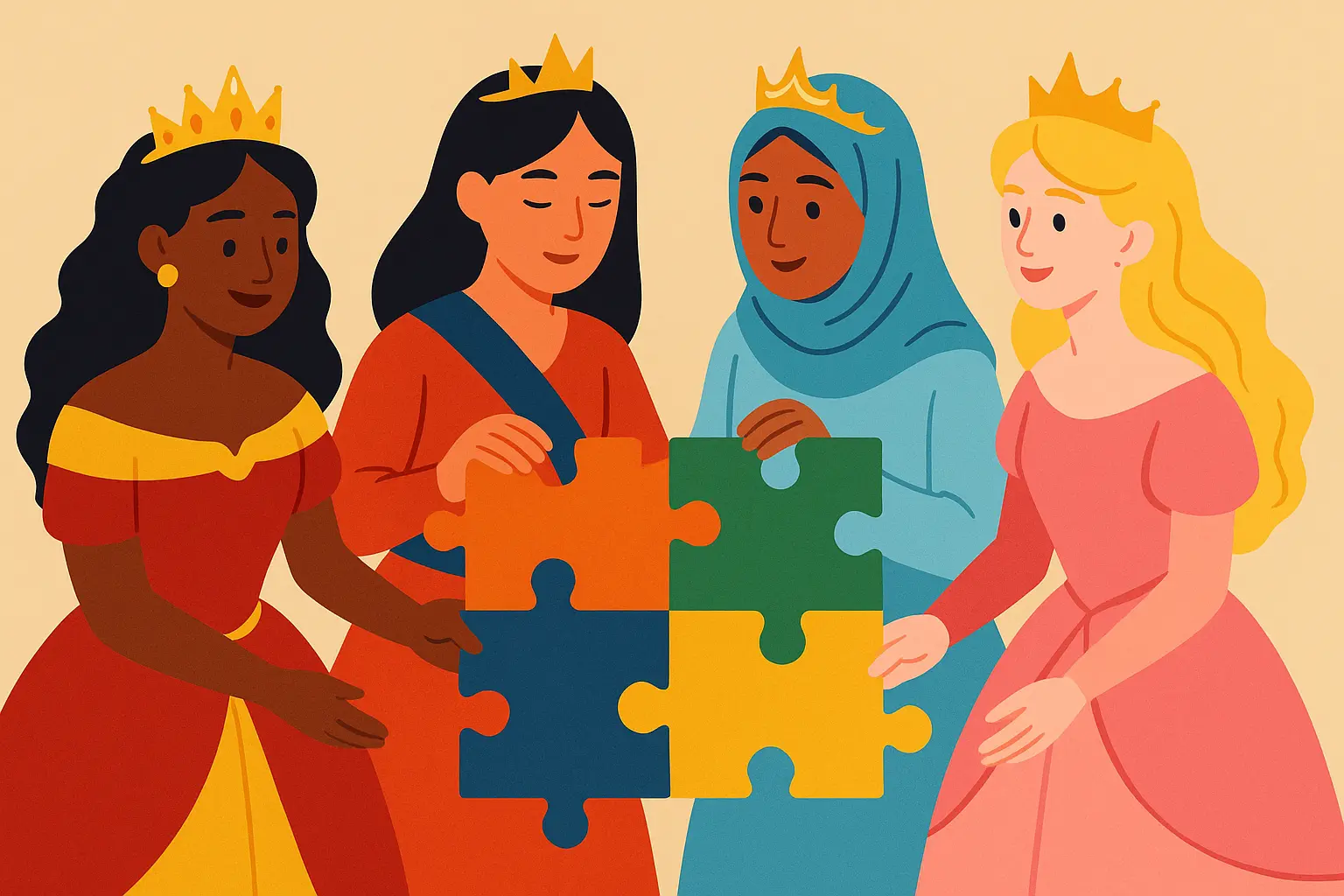
Classic Princess Tales Reimagined for Modern Readers
These new versions flip the script on traditional princess stories, challenging old-fashioned gender roles and outdated ideas while keeping the magical elements that make these tales timeless. These reimagined stories feature empowered princesses who demonstrate intelligence and independence, often in ways that will surprise both you and your kids. From princesses who outsmart dragons to those who choose independence over marriage, these modern classics maintain engaging storytelling while delivering messages about self-determination and personal strength.
1. The Paper Bag Princess by Robert Munsch
This one’s a game-changer if your kid is going through an “I can do it myself” phase. Princess Elizabeth’s world turns upside down when a dragon destroys her castle and kidnaps her fiancé Prince Ronald. Instead of waiting for rescue, she puts on a paper bag (her only remaining clothing) and sets out to save him herself. Through clever wordplay and quick thinking, Elizabeth outsmarts the dragon and rescues Ronald – only to discover he’s more concerned with her appearance than her heroic actions.
Fair warning: after reading this story, don’t be surprised if your child starts questioning why everyone assumes princesses need saving. Elizabeth’s decision to dump Ronald after his shallow response demonstrates healthy boundary-setting that resonates with modern values.
Reading Activity: After reading “The Paper Bag Princess,” challenge your child to create their own clever riddles or word puzzles that Princess Elizabeth might use to outsmart different magical creatures. This activity reinforces the story’s emphasis on intelligence and creativity while developing language skills and problem-solving abilities.
2. Princess Smartypants by Babette Cole
Perfect for kids who roll their eyes at traditional fairy tales. Princess Smartypants enjoys her independent life and has zero interest in marriage, despite constant pressure from suitors and family members. She devises increasingly challenging tasks for potential husbands, hoping to discourage them permanently. When Prince Swashbuckle completes all her challenges, she uses magic to transform him into a frog, ensuring her continued freedom.
The story celebrates personal choice and challenges societal expectations about marriage and happiness. Smartypants’ contentment with her single life provides an important alternative narrative for children who might feel pressured to conform to traditional relationship expectations.
3. The Princess and the Pea: A Modern Retelling by Various Authors
Contemporary versions of this classic tale update the setting and characters while maintaining the core message about authenticity and sensitivity. Modern retellings often feature diverse princesses from different cultural backgrounds, urban settings instead of medieval castles, and updated tests of character that reflect current values.
These adaptations show how timeless themes can be refreshed for new generations while respecting the original story’s appeal and message. Your kid probably knows more about technology than these traditional princesses anyway.
4. Cinderella Liberator by Rebecca Solnit
This feminist retelling transforms the traditional Cinderella story into a tale of sisterhood and mutual empowerment. Instead of competing with her stepsisters, Cinderella helps them recognize their own worth and potential. The story focuses on working together rather than individual triumph over others.
Solnit’s version addresses the problematic elements of the original tale while maintaining its magical appeal, creating a story that promotes cooperation and solidarity among women.
5. Sleeping Beauty’s Daughters by Diane Zahler
The story continues beyond the traditional “happily ever after” by following Sleeping Beauty’s twin daughters as they navigate their own challenges and destinies. Each daughter possesses different strengths and faces unique obstacles that require them to forge their own paths rather than simply inheriting their mother’s story.
This continuation explores themes of sisterhood, individual identity, and the pressure of living up to family legacies while creating space for new adventures and growth.
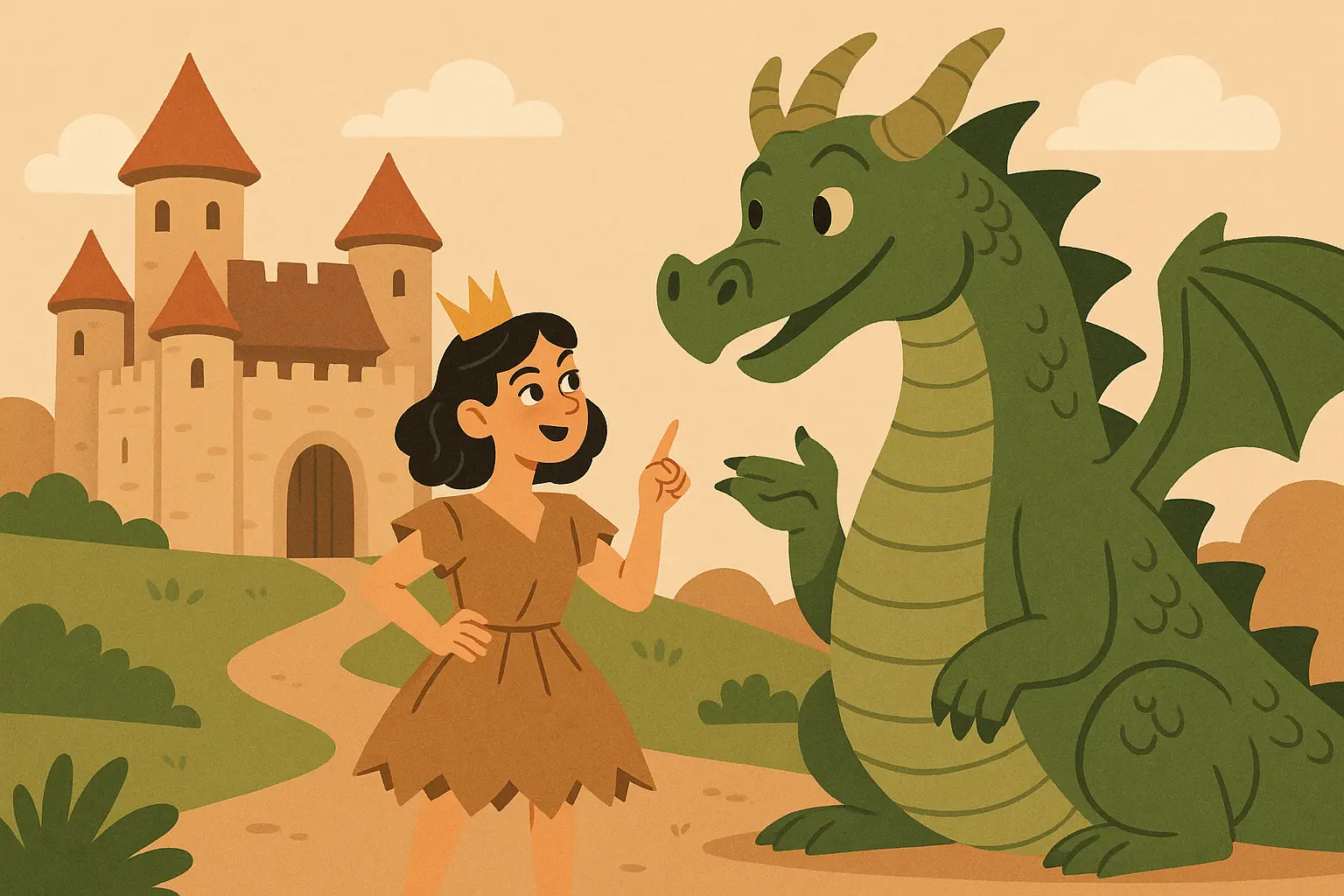
Diverse Cultural Princess Stories from Around the World
Finally, princess stories where kids can see themselves and their families. These narratives feature princesses from various ethnic backgrounds, each bringing unique cultural elements, family structures, and problem-solving approaches to their stories. From celebrating natural hair textures to exploring different concepts of heroism and family loyalty, these stories provide authentic representation that helps all children see themselves reflected in literature while learning about other cultures. Because every kid deserves to see a princess who looks like them or their friends.
6. The Princess Who Saved Herself by Greg Gormley
This empowering tale features a resourceful princess who encounters various predicaments throughout her adventures but consistently finds creative solutions without external help. Whether facing dragons, solving puzzles, or navigating social challenges, she demonstrates that intelligence and determination can overcome any obstacle.
The story’s emphasis on self-reliance and problem-solving skills provides children with a strong role model who shows that asking for help is valuable, but developing personal capabilities is equally important.
7. Princess Hair by Sharee Miller
Young Princess celebrates her natural hair texture and learns to love the unique beauty of her curls, coils, and kinks. The story addresses common struggles that Black children face regarding hair acceptance and provides positive representation of natural hair textures often underrepresented in children’s literature.
Through vibrant illustrations and affirming text, the book teaches children about cultural pride, self-acceptance, and the beauty of diversity while addressing real experiences that many families navigate together. This one might inspire some serious hair celebration sessions at your house.
8. The Princess in Black series by Shannon Hale
Princess Magnolia leads a fascinating double life – maintaining her royal duties during the day while secretly fighting monsters as a superhero. She must balance tea parties and royal obligations with protecting her kingdom from various threats, all while keeping her dual identity secret from friends and family.
The series combines traditional princess elements with superhero action, creating stories that appeal to children interested in both genres while demonstrating that people can have multiple facets to their personalities and interests. Pro tip: your kid will probably want to act out these stories, so maybe hide the kitchen pots before reading the monster-fighting scenes.
|
Cultural Princess Stories |
Origin/Culture |
Key Themes |
Age Range |
What Makes Them Special |
|---|---|---|---|---|
|
Princess Hair |
African American |
Self-acceptance, natural beauty |
3-7 years |
Celebrates natural hair textures |
|
Mulan retellings |
Chinese |
Honor, family duty, courage |
6-12 years |
Military service, family loyalty |
|
Princess Cupcake Jones |
African American |
Problem-solving, family support |
4-8 years |
Community values, resilience |
|
The Princess in Black |
Contemporary diverse |
Dual identity, heroism |
5-9 years |
Superhero princess combo |
|
Various cultural retellings |
Global |
Universal themes with cultural specificity |
All ages |
Authentic cultural elements |
9. Mulan: The Ballad of Hua Mulan (Various Retellings)
The legendary Chinese story follows a young woman who disguises herself as a man to serve in the army in place of her aging father. Through military training and battlefield experiences, she demonstrates courage, strategic thinking, and loyalty while navigating the challenges of maintaining her disguise.
Various retellings explore different aspects of Mulan’s story, from her internal struggles with identity and duty to her relationships with fellow soldiers and family members, providing rich material for discussions about honor, sacrifice, and gender roles.
10. Princess Cupcake Jones series by Ylleya Fields
This series features an African American princess navigating everyday childhood challenges with creativity, determination, and family support. Each book addresses common childhood experiences through Princess Cupcake Jones’ relatable adventures.
The stories provide positive representation while addressing universal childhood experiences, helping all children see themselves in the protagonist’s journey while celebrating African American culture and family values.
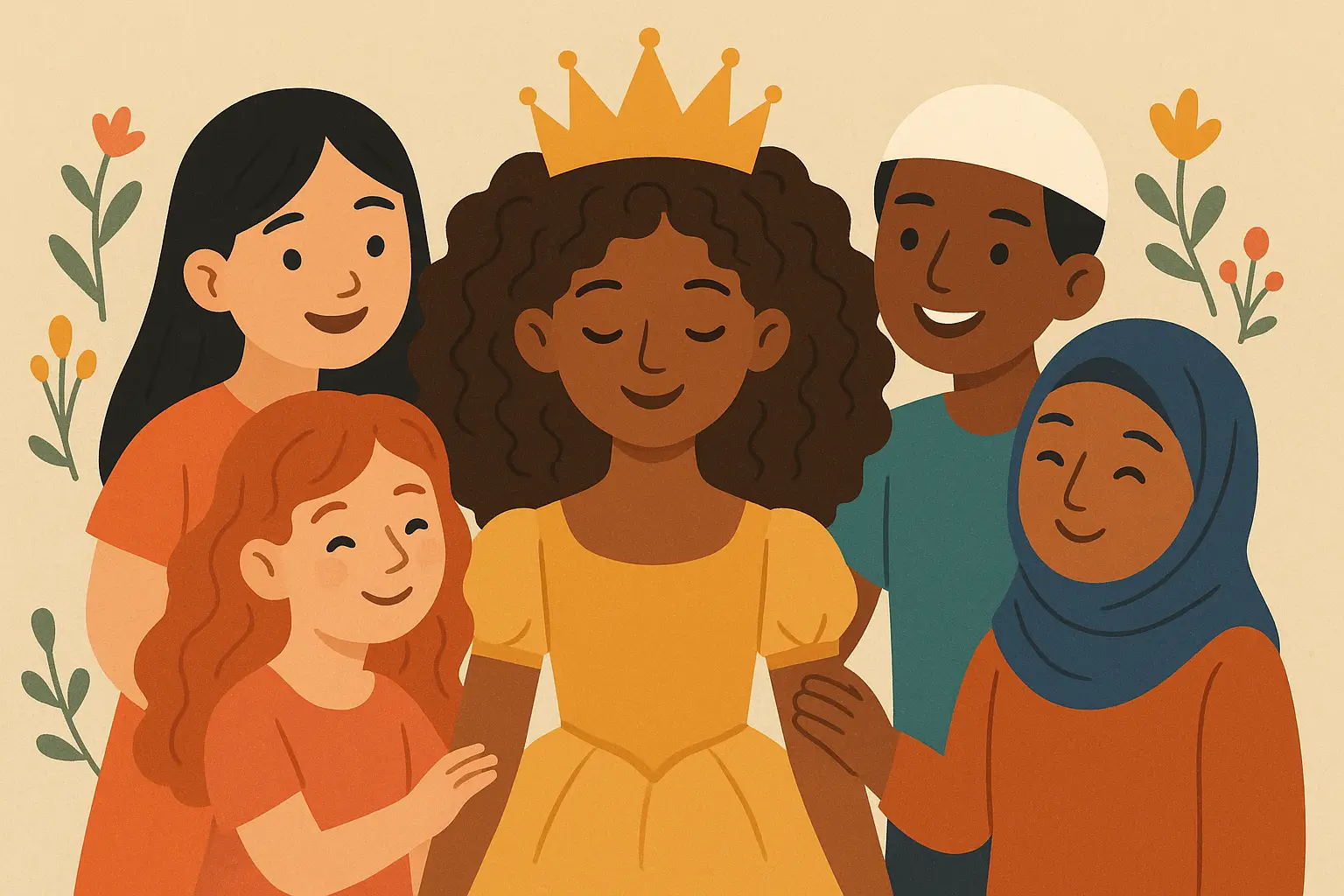
Contemporary Princess Adventures for Today’s Kids
Modern princess stories reflect contemporary life while maintaining magical elements that make these tales special. These narratives feature princesses dealing with current challenges while using modern tools and knowledge to solve problems, bridging traditional fairy tale elements with themes that actually make sense to today’s children. These stories show that princess qualities remain relevant in modern settings – they’ve just gotten a major upgrade.
11. The Very Fairy Princess series by Julie Andrews
Geraldine absolutely believes she’s a fairy princess, despite lacking traditional magical powers or royal heritage. Her unwavering confidence in her identity leads to adventures where she learns valuable lessons about kindness, friendship, and believing in oneself while navigating everyday situations.
The series celebrates imagination and self-confidence while addressing real childhood challenges through Geraldine’s unique perspective and determination to spread joy and kindness wherever she goes. My friend’s daughter carried the first book everywhere for three months straight.
Modern Princess Activity: Create a “Princess Problem-Solving Kit” with your child that includes both traditional items (like a magic wand made from a paper towel tube) and modern tools (like a calculator or tablet). This activity helps children understand that modern princesses can use both imagination and technology to solve problems.
12. Princess Pistachio series by Marie-Louise Gay
This quirky princess character approaches problems with humor, creativity, and unconventional thinking that often leads to unexpected solutions. Her adventures take place in settings that blend fantastical elements with everyday situations, creating stories that feel both magical and relatable.
Princess Pistachio’s unique problem-solving approach encourages children to think creatively and embrace their individual perspectives rather than conforming to expected solutions or behaviors.
13. The Princess Rules series by Philippa Gregory
Contemporary princesses in this series navigate modern challenges while maintaining royal responsibilities, creating stories that blend traditional elements with current themes. Characters deal with real issues while learning to balance personal desires with public duties.
The series addresses complex topics through accessible storytelling, helping children understand how leadership and responsibility apply to their own lives and communities.
14. Princess Penelopea series by Various Authors
This tech-savvy princess uses modern tools, scientific knowledge, and innovative thinking to solve problems in her kingdom. Whether addressing infrastructure challenges, communication issues, or resource management, she demonstrates how contemporary skills can address both traditional and modern problems.
The series bridges traditional fairy tale settings with current technology and knowledge, showing children how their modern skills and interests can be valuable in any context.
15. The Princess Diaries series by Meg Cabot
Great for that phase when they think they’re too old for picture books but still want the magic. Mia Thermopolis discovers her royal heritage and must learn to balance typical teenage challenges with princess duties and public expectations. The series follows her journey through high school, relationships, and personal growth while navigating the complexities of modern royalty.
Through Mia’s relatable struggles with identity, friendship, and responsibility, the series addresses adolescent challenges while exploring themes of duty, authenticity, and finding one’s place in the world.

Fantasy Princess Stories That Spark Imagination
Fantasy princess stories transport readers to magical realms where princesses encounter dragons, wizards, and enchanted objects while developing their own magical abilities. These narratives combine traditional fantasy elements with character-driven plots that emphasize personal growth, friendship, and the responsible use of power. Set in richly imagined worlds with consistent magical rules, these stories allow princesses to face extraordinary challenges that require both courage and wisdom, creating adventures that captivate young imaginations while delivering meaningful lessons about leadership and moral decision-making.
16. The Princess Academy series by Shannon Hale
Mount Eskel’s girls attend princess academy to prepare for potential marriage to the prince, but the story subverts expectations by focusing on education, female friendship, and personal empowerment. Miri discovers the magical element of “quarry-speech” – telepathic communication through stone – which creates opportunities for collaboration and understanding rather than individual heroism.
The academy setting emphasizes learning and growth over romance, while Miri learns to value her mountain heritage while gaining new skills and perspectives. Each supporting character has distinct personalities and growth arcs that contribute to the overall narrative.
17. The Enchanted Forest Chronicles by Patricia C. Wrede
Princess Cimorene volunteers to be captured by dragon Kazul to escape an unwanted marriage, leading to magical adventures that span four interconnected books. She evolves from a rebellious princess seeking escape to a confident leader who eventually becomes Queen of the Dragons.
The series creates a consistent fantasy world with memorable side characters and escalating stakes that maintain reader engagement. Cimorene’s growth demonstrates intelligence and leadership skills while incorporating problem-solving, diplomacy, and critical thinking through fantasy scenarios. Heads up – you might find yourself enjoying these stories as much as your kid does.
18. The Princess Tales series by Gail Carson Levine
Multiple interconnected stories feature various princesses in magical settings, each learning important life lessons through their unique adventures. The tales blend familiar fairy tale elements with original magical concepts and character development that extends beyond traditional princess roles.
Each story stands alone while contributing to a larger magical world where princesses face genuine challenges that require both magical and practical solutions.
19. The Princess of the Midnight Ball by Jessica Day George
This retelling of “The Twelve Dancing Princesses” adds depth, mystery, and character development to the classic tale. The story explores the curse that compels the princesses to dance each night while developing the relationships between sisters and their eventual rescuer.
The narrative combines romance, mystery, and fantasy elements while addressing themes of family loyalty, sacrifice, and breaking free from magical compulsions through determination and love.
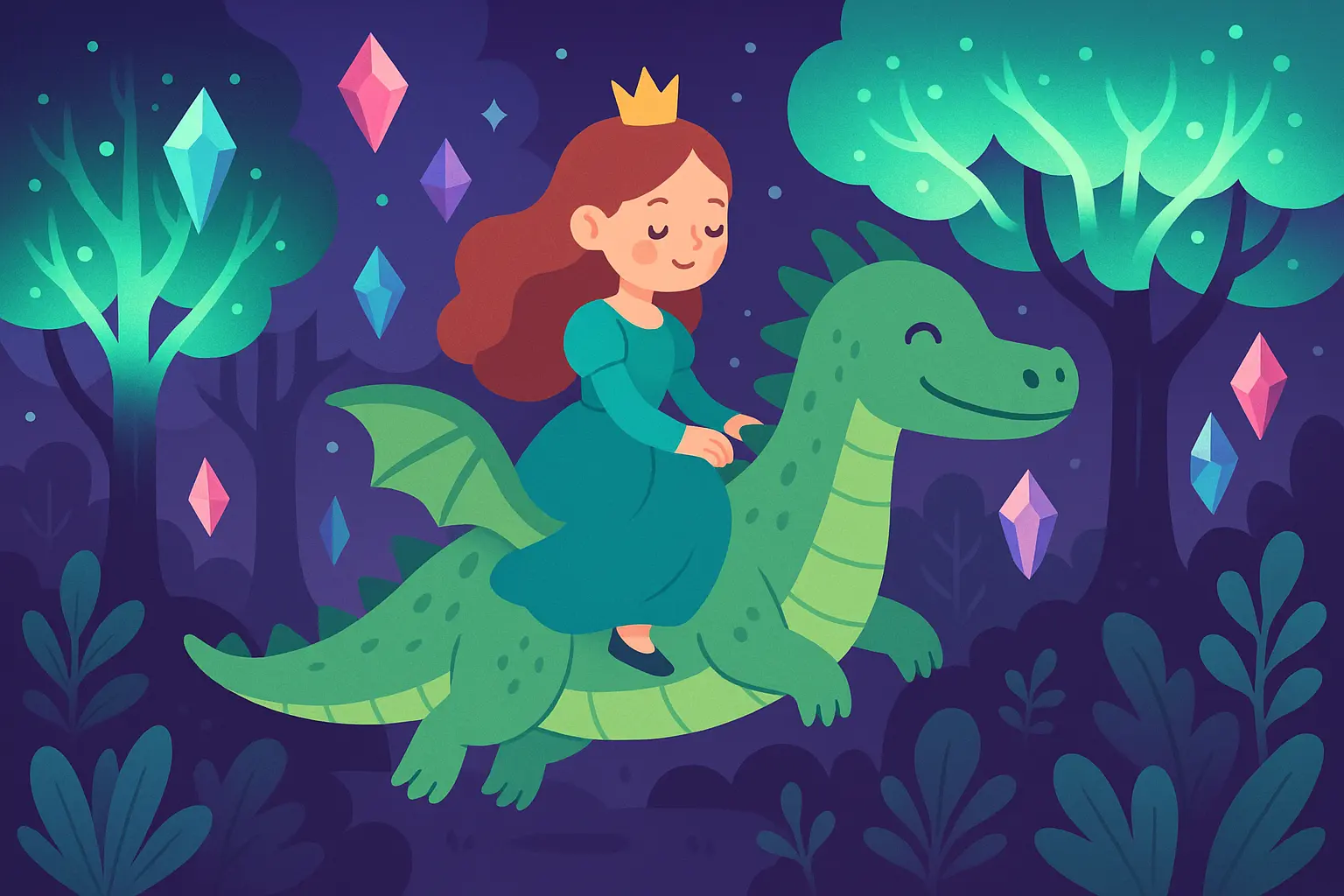
Educational Princess Stories That Make Learning Fun
Educational princess stories sneak in STEM concepts, scientific exploration, and academic skills into engaging narratives that maintain the magical appeal of traditional fairy tales. These stories feature princesses who solve problems through engineering, coding, mathematics, and scientific thinking while facing adventures that require both intellectual and emotional intelligence. By combining princess themes with educational content, these narratives encourage children to pursue learning interests while seeing themselves as capable problem-solvers and innovators.
20. Princess Penelopea and the Science Fair by Various Authors
Princess Penelopea combines royal duties with scientific exploration as she prepares for her kingdom’s science fair. Through experiments, hypothesis testing, and collaborative research, she demonstrates how scientific thinking can solve both magical and practical problems.
The story introduces scientific concepts through hands-on activities and encourages young readers to pursue STEM interests while maintaining the enchanting elements that make princess stories appealing. This one might inspire some serious kitchen chemistry experiments.
21. The Princess Engineer series by Various Authors
These stories feature princesses who solve kingdom problems through engineering and innovative thinking, from building bridges to designing water systems. Each book focuses on different engineering principles while showing how technical skills can improve communities and solve real-world challenges.
The series promotes technical skills and problem-solving approaches while demonstrating that engineering and creativity work together to create meaningful solutions.
|
Educational Princess Stories |
STEM Focus |
What Kids Learn |
Best For |
Skills They’ll Pick Up |
|---|---|---|---|---|
|
Princess Penelopea Science Fair |
Scientific Method |
How to test ideas |
6-10 years |
Critical thinking, observation |
|
Princess Engineer series |
Engineering Design |
Building and fixing things |
7-11 years |
Spatial reasoning, innovation |
|
Princess Ada’s Algorithm |
Coding/Math |
Logic, patterns, sequences |
8-12 years |
Computational thinking |
|
Princess Chemistry Lab |
Chemistry |
How stuff works together |
9-13 years |
Scientific inquiry |
|
Princess Space Explorer |
Astronomy/Physics |
Planets, gravity, space travel |
6-10 years |
Scientific curiosity |
22. Princess Ada’s Algorithm by Various Authors
Inspired by Ada Lovelace, this story introduces coding and mathematical concepts through princess adventures that require logical thinking and pattern recognition. Princess Ada uses algorithmic thinking to solve puzzles, organize kingdom resources, and communicate with magical creatures.
The narrative makes abstract mathematical concepts accessible through concrete story situations while celebrating the historical contributions of women in mathematics and computer science.
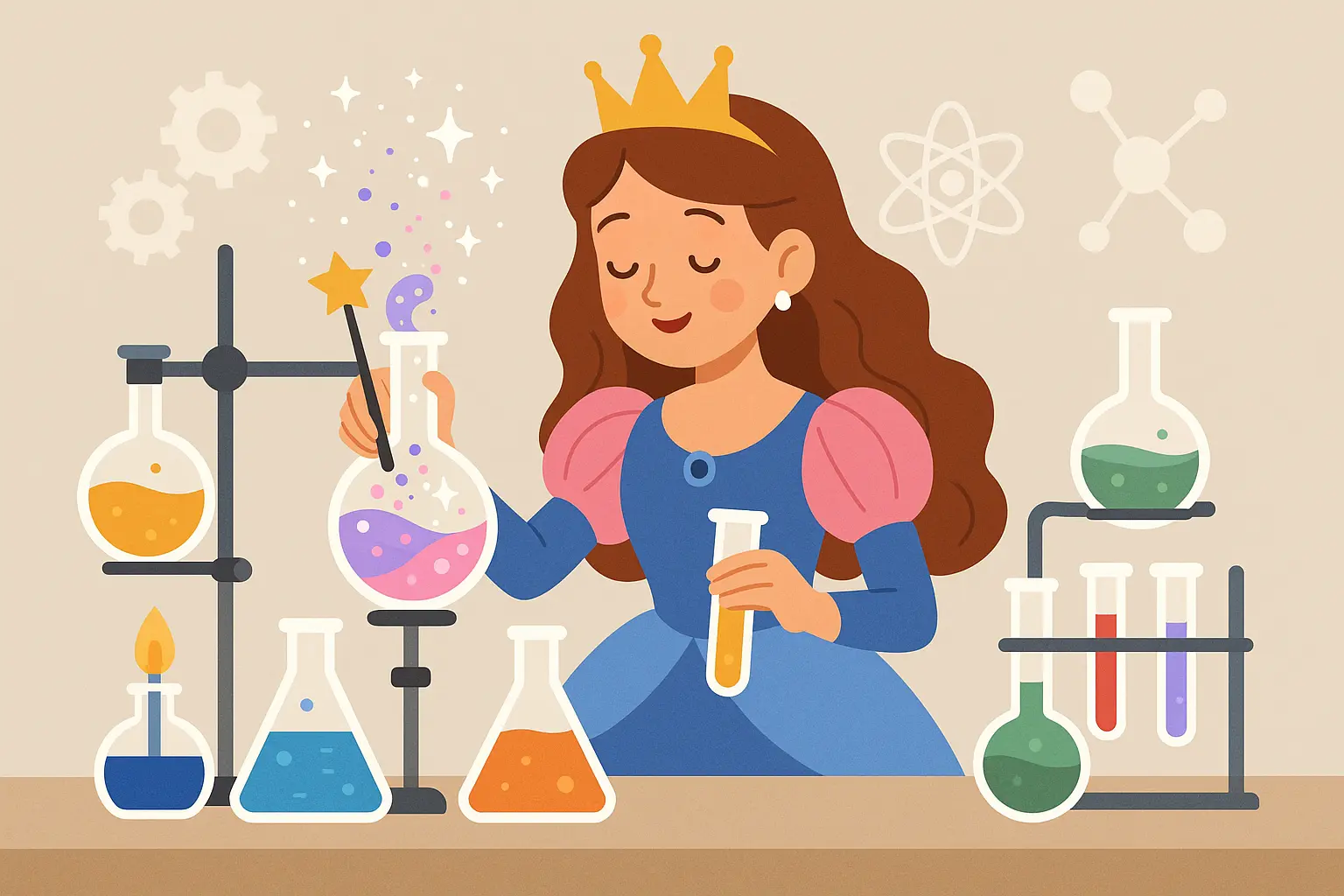
Perfect Princess Bedtime Stories for Peaceful Sleep
We’ve all been there – it’s 8 PM, your kid is wired, and you’re desperately looking for a story that will actually calm them down. Princess bedtime stories are specifically crafted to create calm, soothing experiences that help children transition from active play to restful sleep. These gentle narratives feature soft themes, comforting resolutions, and peaceful imagery that promotes relaxation while still delivering positive messages about kindness, friendship, and self-acceptance.
23. The Princess and the Moon by Various Authors
Gentle bedtime stories featuring princesses and celestial themes create perfect atmospheres for winding down before sleep. These tales often involve princesses who befriend stars, help the moon with nighttime duties, or discover magical connections between their kingdoms and the night sky.
The celestial themes naturally promote peaceful feelings while the princess characters demonstrate kindness and wonder that children can carry into their dreams.
24. Princess Dreams series by Various Authors
Ideal for bedtime when you need something that won’t get them all riled up. Soft, comforting tales help children transition to sleep while featuring positive princess role models who face gentle challenges with grace and wisdom. These princess bedtime stories often involve dream sequences, magical sleep aids, or princesses who help other characters overcome bedtime fears.
The series prioritizes emotional comfort and security while maintaining engaging storylines that hold children’s attention without overstimulating them before sleep.
Bedtime Routine Enhancement: Create a “Princess Dream Journal” where your child can draw or write about their favorite princess bedtime story each night. Include prompts that reinforce positive messages while creating a calm transition ritual that children look forward to each evening.
25. The Sleepy Princess series by Various Authors
Specifically designed princess bedtime stories combine soothing narratives with gentle life lessons about friendship, kindness, and courage. These tales feature repetitive elements, calm pacing, and satisfying resolutions that help establish positive sleep associations.
The stories balance entertainment with relaxation, creating bedtime experiences that children look forward to while parents appreciate the peaceful transition to sleep time. Pro tip: Keep a few of these shorter stories in your back pocket for those nights when bedtime is already running late.
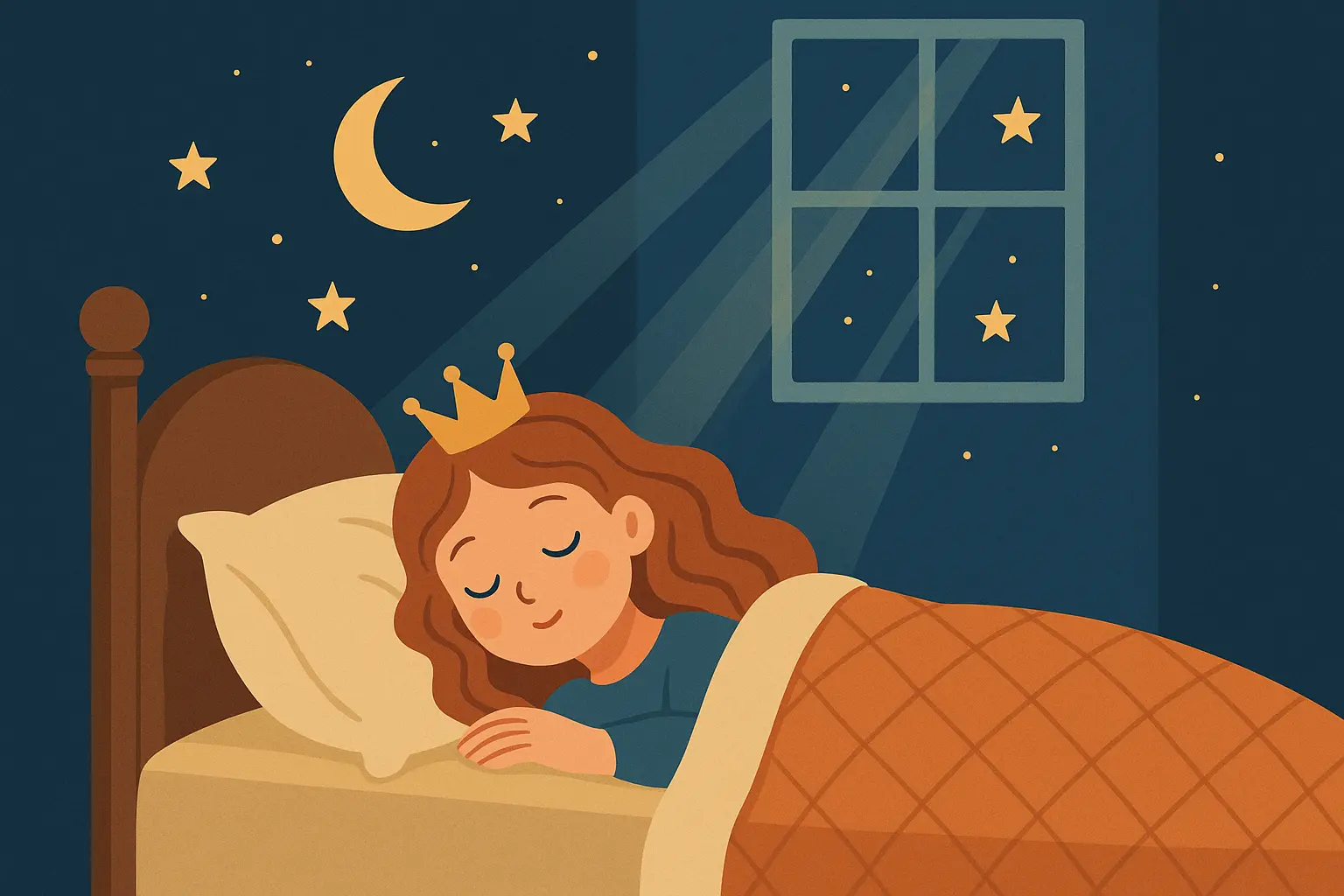
How to Choose the Right Princess Story for Your Child
Selecting appropriate princess stories requires considering your child’s age, interests, developmental needs, and cultural background while evaluating story quality, educational value, and emotional impact. Different age groups benefit from varying levels of narrative complexity, with preschoolers enjoying simple moral lessons and repetitive elements, while older children engage with sophisticated themes and character development. The best princess stories match your child’s current interests while gently introducing new concepts and perspectives that support their growth and learning.
Age-Appropriate Content That Actually Works
Little ones (ages 3-5) respond best to simple stories with clear lessons, repetitive elements, and comforting themes that don’t overwhelm developing attention spans. Think short, sweet, and not too exciting before bedtime.
Elementary-age children (6-10) can handle more complex narratives with character development and problem-solving elements that engage growing minds and reading skills. Perfect for kids who are just starting to read chapter books.
Middle-grade readers (11-13) appreciate sophisticated themes, realistic challenges, and deeper character exploration that reflects their own developing understanding of complex social and emotional situations.
Matching Stories to What Your Kid Actually Likes
Consider your child’s current obsessions – whether they’re into science, art, sports, or social justice – and look for princess stories that incorporate these interests naturally. Children engage more deeply with stories that reflect their passions while potentially discovering new areas of interest through compelling narratives.
Pay attention to your child’s preferred story elements, such as humor, adventure, mystery, or gentle emotional content, to guide your selections toward stories that will maintain their engagement and enthusiasm for reading.
Cultural Representation That Feels Real
Choose stories that reflect your family’s values while exposing your child to diverse perspectives and experiences that broaden their understanding of the world. Look for authentic cultural representation that avoids stereotypes while celebrating different traditions and approaches to problem-solving.
Consider how the princess characters model behaviors and attitudes you want to encourage, such as kindness, perseverance, critical thinking, and respect for others.
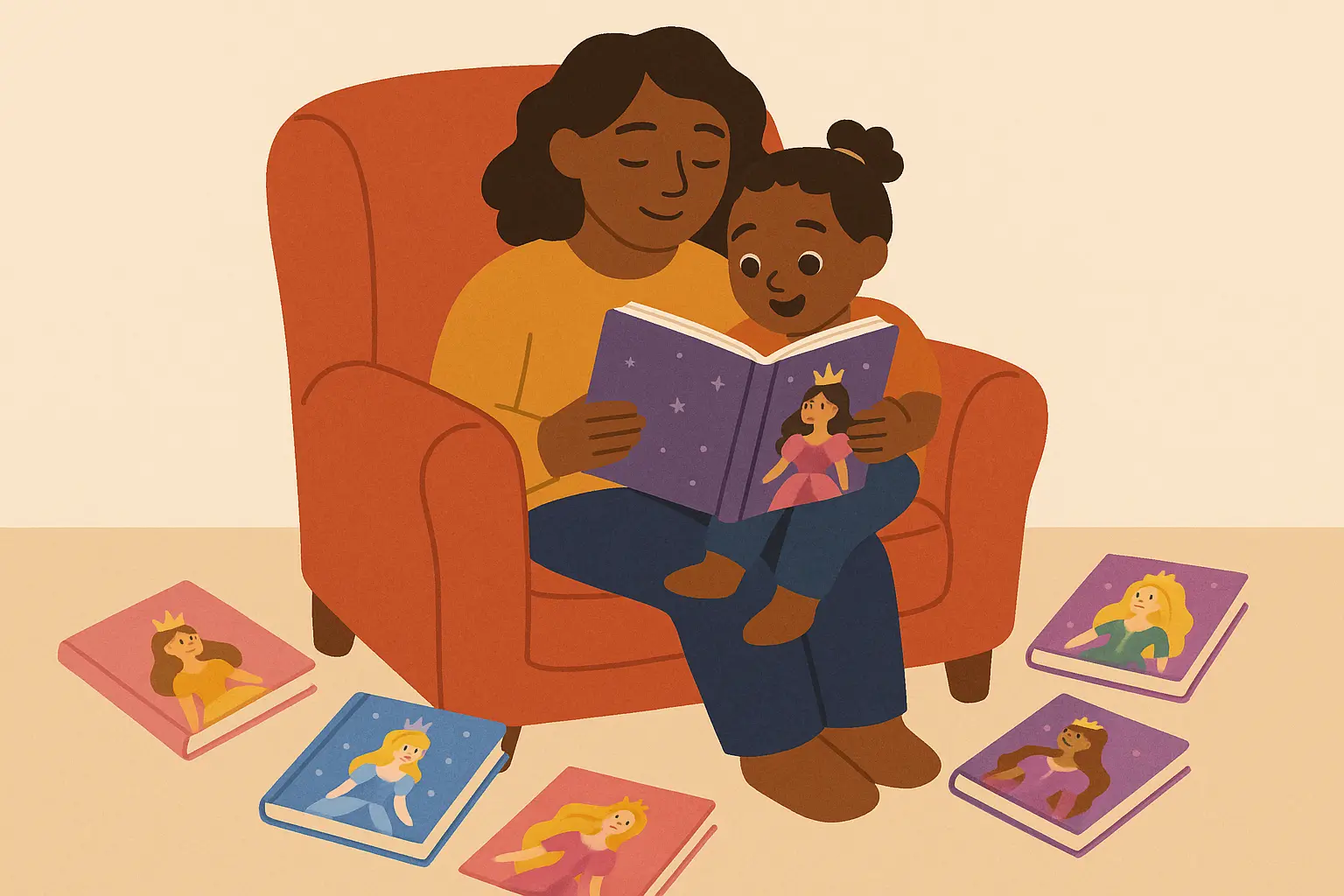
Transform Storytime with AI-Powered Princess Tales
Tired of reading the same three princess books every night? Nairrate’s bedtime story generator and other AI-powered story generation tools offer unique opportunities for creating personalized princess stories that address specific needs and individual interests. Whether you’re seeking custom bedtime stories, educational content, or diverse representation, the platform’s capabilities help craft compelling narratives that meet exact requirements. From generating opening lines to developing complex character arcs, Nairrate’s story starters generator makes story creation accessible for parents, educators, and writers while ensuring culturally sensitive and educationally valuable content.
Custom Princess Bedtime Stories for Your Family
Nairrate’s Story Starters Generator creates opening lines specifically tailored to princess narratives, whether you need mysterious beginnings, adventurous starts, or gentle bedtime openings. The AI helps develop soothing narratives that incorporate your child’s interests while maintaining the calming qualities essential for bedtime routines.
You can create stories featuring your child’s name, specific interests, and challenges they’re currently facing, making bedtime stories more engaging and personally meaningful than generic alternatives. It’s like having a personal storyteller who never runs out of ideas.
Educational Integration Made Simple
The platform seamlessly blends STEM concepts, historical facts, or social-emotional learning into engaging princess narratives without sacrificing storytelling quality. Educators and parents can incorporate specific learning objectives while maintaining the magical appeal that keeps children interested and engaged.
Nairrate’s kids story generator ensures that educational content enhances rather than interrupts the storytelling experience, creating stories that teach while they entertain.
Authentic Cultural Representation
When creating princess stories representing diverse cultures, Nairrate’s AI helps ensure respectful, authentic representation while avoiding harmful stereotypes or cultural appropriation. The platform’s vast knowledge base allows for culturally sensitive storytelling that celebrates diversity authentically.
The ability to generate multiple variations allows you to experiment with different approaches until you find the perfect princess story for your specific needs, whether building confidence, encouraging exploration, or establishing peaceful sleep routines.
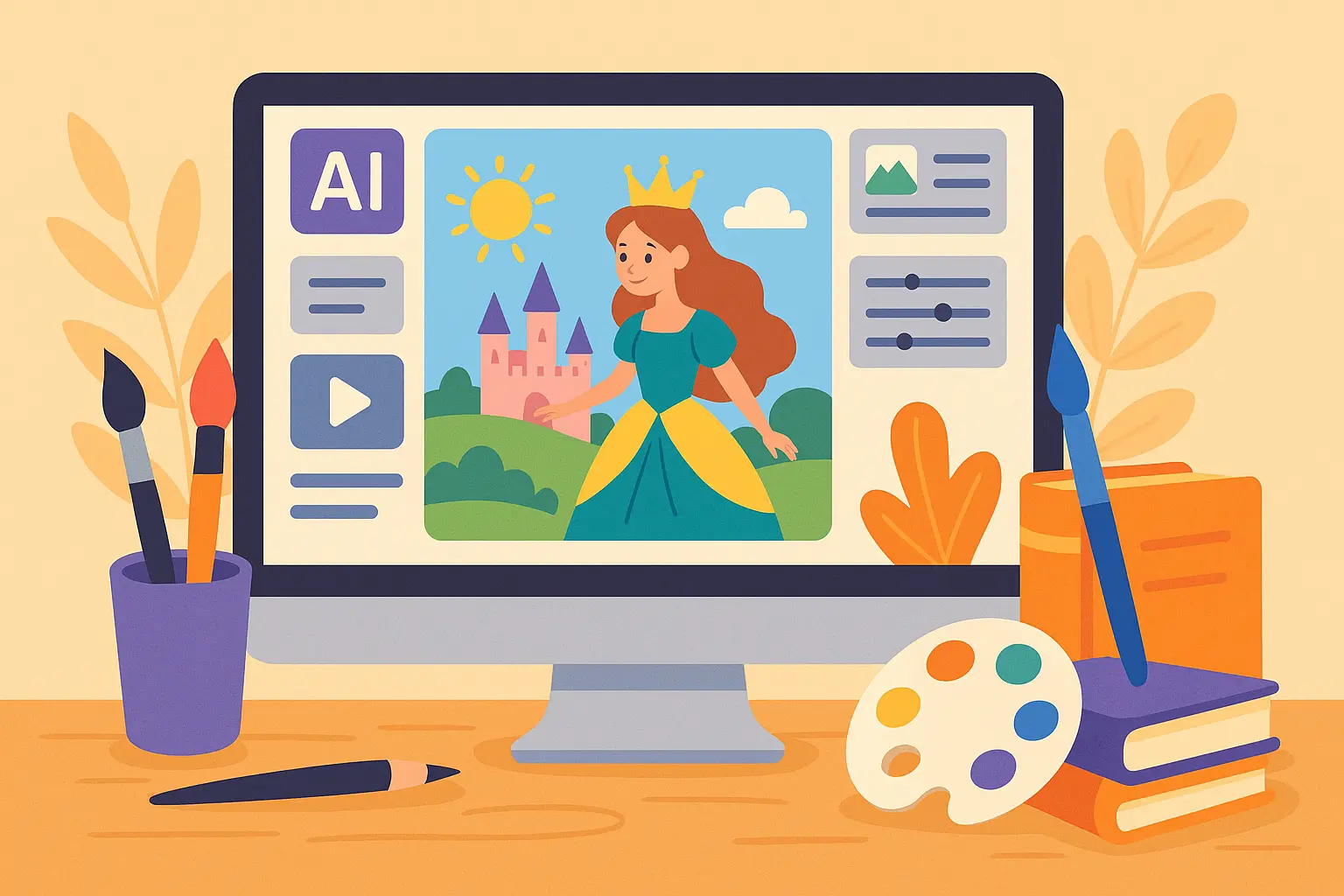
Final Thoughts
Look, at the end of the day, the best princess story is whatever gets your kid excited about reading. Some nights that might be a classic fairy tale, other nights it could be a princess who builds robots. The magic isn’t in finding the “perfect” book – it’s in those moments when your child’s eyes light up and they ask, “Can we read another one?”
Princess stories continue evolving to meet the needs of modern children while maintaining the magical elements that have captivated young readers for generations. The 25 stories featured in this guide represent the best current options for parents, educators, and children seeking narratives that entertain, educate, and inspire. From classic retellings that challenge outdated stereotypes to contemporary adventures that address current challenges, these carefully selected stories provide diverse options for every child’s interests and developmental needs.
The most effective princess stories balance familiar fairy tale elements with fresh perspectives that actually make sense to today’s audiences. Whether you’re looking for bedtime stories that promote peaceful sleep, educational narratives that make learning enjoyable, or diverse tales that celebrate different cultures and perspectives, the right princess story can significantly impact your child’s reading experience and personal development.
Remember that the best princess story for your child is one that matches their current interests while gently introducing new concepts and values that support their growth. Take time to explore different options, involve your child in the selection process, and don’t hesitate to revisit favorites that continue providing comfort and inspiration. Library tip: Most of these are available as audiobooks if you need a break from reading aloud. If your kid gets obsessed with one particular story, embrace it – repetition is how they learn.
With the right princess stories in your collection, you’re providing your child with powerful tools for imagination, learning, and emotional development that will benefit them throughout their lives. And who knows? You might find yourself looking forward to storytime as much as they do.



Add comment